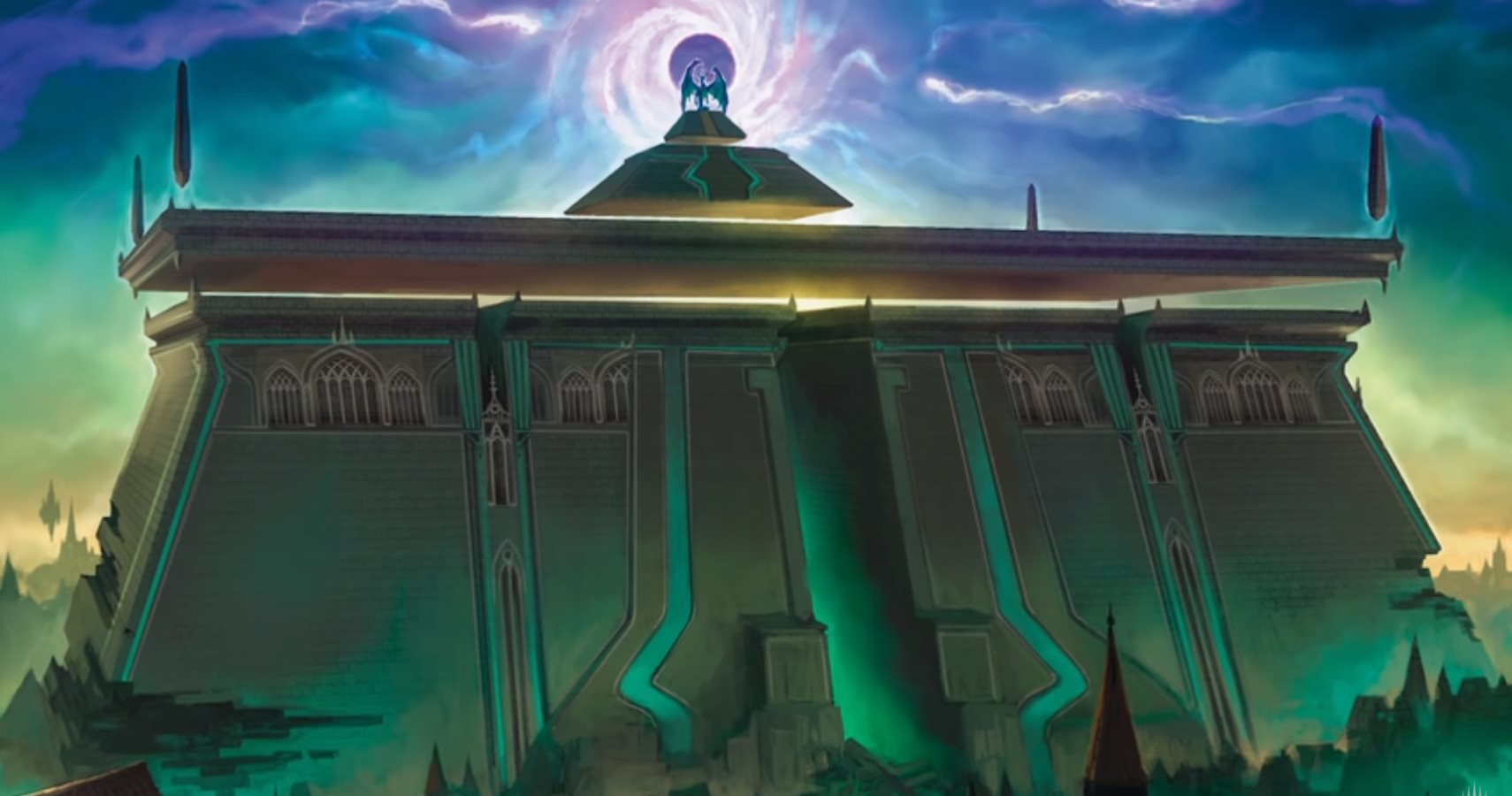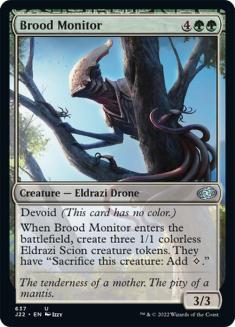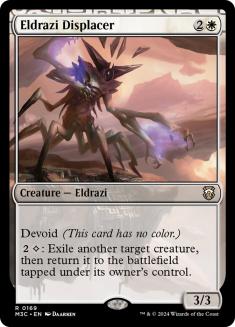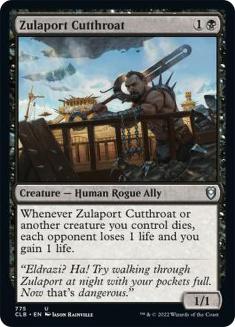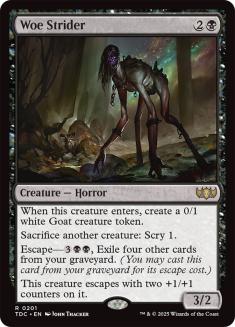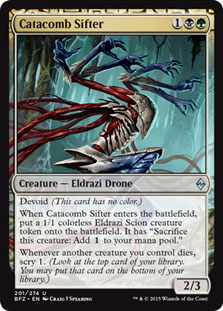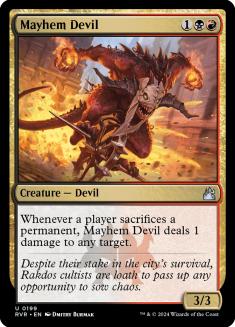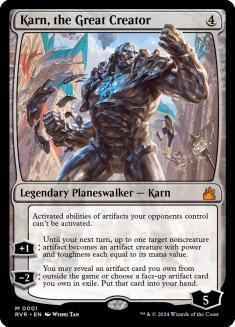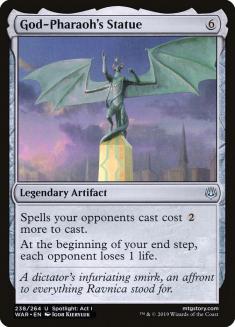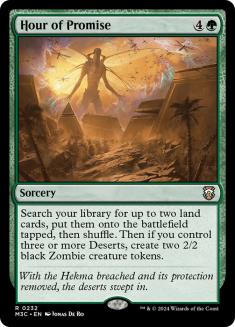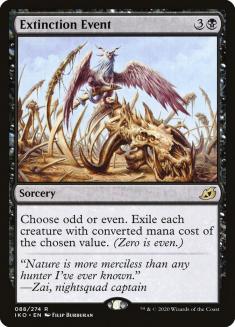It’s time for a new combo deck in Pioneer. Whenever one gets banned, another rises to take its place. Sadly, Dimir Inverter is no more, but this new take on a midrange-combo shell is exactly the kind of brew that you want to see if you’re looking to pilot something fresh in the wake of an extensive banning.
Now, in the wake of Wizards of the Coast (WotC)’s decisive actions, Pioneer was left almost completely open. Sure, there is still an Azorius Spirits deck, a Mono-Black Aggro deck, and Five-Color Niv-Mizzet. Of course, some type of Uro Planeswalker control deck is bound to stick around, as is a weakened (but still strong) version of Lotus Field Combo, but the hope with these bannings was to induce some novelty and innovation.
Way back when Pioneer was first announced, about a year ago, the first inclination of many brewers was to look for older busted decks from Standard formats past that could compete in this new world: Aetherworks Marvel, Bant Company, Temur Energy, various Emerge decks, Rally the Ancestors, Ramunap Red, and Mardu Vehicles. But one deck that never quite got its deserved respect was a four-color Collected Company combo deck that saw play for a few weeks after Pro Tour Shadows Over Innistrad in 2016.
Creatures (29)
- 4 Elvish Visionary
- 4 Catacomb Sifter
- 3 Brood Monitor
- 2 Zulaport Cutthroat
- 4 Reflector Mage
- 4 Eldrazi Displacer
- 4 Duskwatch Recruiter
- 4 Loam Dryad
Lands (24)
Spells (7)

This deck is not powerful enough for Pioneer. Let’s get that out of the way. However, it did something unique at the time. It clogged up the battlefield, kept pace with whatever the opponent was doing (though with ostensibly weaker cards), and then won the game out of nowhere with these low-power scraps of cardboard.
After all, Brood Monitor and Eldrazi Displacer combine with Zulaport Cutthroat to generate infinite life drain. Incidentally, it even got around the popular Kalitas, Traitor of Ghet at the time, which was a relevant piece of utility. It also could turn its entire battlefield into Ormendahl, Profane Prince on a dime, while not being vulnerable to opposing Ormendahls (Displacer and Reflector Mage being what they were).
No one appreciated this style of “delay, delay, fiddle with my cards, bounce your cards, win out of nowhere” until it hit them. This was a major breakthrough in development with Collected Company, turning it into a combo card in Standard (though it was known as a Modern combo piece for some time prior).
That changed, but the low power level of the individual cards quickly made it difficult to justify playing the deck once others got a sense of how to beat it. And in Pioneer, there have simply been more powerful, faster, more consistent combo decks at every turn. Decks that took advantage of Nykthos, Shrine to Nyx and the power of Devotion. Decks that took advantage of Lotus Field, Thespian’s Stage, and Hidden Strings to cheat on mana. Decks that were simply too good at being aggressive to keep up via a midrange strategy.
But that’s changing now.
Some new cards have been printed that kind of, sort of, if you squint, let a Jund shell do basically the same thing as this Four-Color Company deck, only more consistently and quickly. Combine that with the neutering of many of Pioneer’s past powerhouses and you have something exciting brewing.
Creatures (30)
- 3 Llanowar Elves
- 3 Elvish Mystic
- 4 Catacomb Sifter
- 4 Zulaport Cutthroat
- 4 Priest of Forgotten Gods
- 4 Mayhem Devil
- 4 Gilded Goose
- 4 Woe Strider
Lands (22)
Spells (8)
Sideboard

You play a normal midrange gameplan. You cast a Turn 1 mana creature, then perhaps a three-drop on Turn 2. You can even fire off a Collected Company to generate a few more bodies on the battlefield, but by Turn 4, it’s time to make something happen. You slap down a Bolas’s Citadel and sparks start flying.
Assuming you can assemble a Woe Strider and a Zulaport Cutthroat, the game is going to be very hard to lose at that point. You can scry past any bricks, freely cast spells off the top of your library with Bolas’s Citadel, gain enough life to keep going with Zulaport Cutthroat, and eventually sacrifice your whole battlefield to one-shot your opponent for their remaining life total. Mayhem Devil and Catacomb Sifter act as slightly different versions of Woe Strider and Zulaport Cutthroat, both worse at the straight combo yet better in games where you need to cast real creatures, eke out value, and maybe even turn them sideways in order to pick up the win.
There’s no shame in winning a game with a few Mayhem Devils and a Zulaport Cutthroat turning your Priest of the Forgotten Gods into a Lava Axe machine. Or in using Woe Strider and Catacomb Sifter to scry down to your Bolas’s Citadel to combo off in the face of certain defeat. Or in bringing back Woe Striders to just beat down the old-fashioned way through removal. (It’s no Uro, but it’ll do in a pinch.)
Now, the Pioneer metagame has shaped up enough for us to start looking at matchups, something that could not have been sad last week when the bannings were fresh. Here are the most common:
Against Mono-Green Devotion, the hope is to not have your opponent draw a Karn, the Great Creator. Both players are essentially playing Solitaire Magic, hoping to assemble the correct battlefield to lock out or overpower the opponent. Fortunately for us, the opponent is unlikely to actually bash through and win the game against us without Vivien, Arkbow Ranger finding Ulamog, the Ceaseless Hunger. Even a big Voracious Hydra is going to require two turns to actually punch through for the win, and it’s unlikely that the opponent can assemble a big Hydra before Turn 4. That means you’re going to have at least five turns to get the pieces you need in order and combo off.
If the opponent drops a Karn on Turn 3 and a God-Pharaoh’s Statue on Turn 4, on the other hand, things get difficult quickly. God-Pharaoh’s Statue turns off Bolas’s Citadel, which means you’re stuck trying to assemble the combo in slow mode. It’s not going to be fun and it’s unlikely to work. You’re almost forced to bring in some number of Reclamation Sage just to stop that unfortunate outcome, though Reclamation Sage is absolutely fine in general as an answer to Wolfwillow Haven. Overall, this matchup is close but I’d rather be playing the Jund side. It just feels more fun to stitch together the win the hard way, rather than chucking planeswalkers until the opponent goes down.
Against Five-Color Niv-Mizzet, obviously sweeper effects are going to be quite strong against you. However, the opponent only packs one Hour of Devastation in many builds. A resolved Bolas’s Citadel is going to let you do some filthy things out of nowhere, including win the game from a naked battlefield against an opposing Niv-Mizzet Reborn. Your biggest advantage is your speed; you can have multiple creatures on the battlefield before your opponent can cast a single spell! If you’re on the play in Game 1 with a strong hand, there’s basically no way you can lose. Just curve up to a Bolas’s Citadel on Turn 4 and win with ease.
After your opponent gets to sideboard in some copies of Fatal Push, things get a little bit better for them, but you’re still resilient. The best card against you in the sideboard? Extinction Event, which is a giant beating if they sweep up your one-mana Elves and Geese as well as your three-mana synergy pieces. They even get to keep their Sylvan Caryatids! How unfair!
Jeskai Lukka (Yorion), which is picking up in Pioneer quickly, is not a good matchup. Your opponent has a lot of solid removal, four maindeck Anger of the Gods, Supreme Verdict in the sideboard, and Lukka to just turn up an Agent of Treachery on Turn 5. Once the Agents start churning and stealing your best permanents, the game is likely to slip out of control. You’re not advantaged here, though Bolas’s Citadel is (once again) powerful enough to win the game on its own. You’re never out when you have the Citadel!
Temur Reclamation, like Jeskai Lukka (Yorion), is another transplant from the most recent Standard format that was banned, and it too packs a few sweepers and counterspells to make your life difficult. Anger of the Gods is a tremendous card against you, as is Blast Zone. Cards like Censor and Mystical Dispute make it difficult to land the two big spells, Collected Company and Bolas’s Citadel, and sideboard copies of Scorching Dragonfire and Izzet Staticaster are not pleasant to face. It seems like the two decks most recently banned from Standard are going to start mopping the floor with the one derived from older Standard formats, and they are poised to continue to do so for some time. Let’s see if Fires of Invention and Wilderness Reclamation hit the sidelines in Pioneer as well.
Mono-Black Aggro, on the other hand, is a good matchup. Though it’s aggressive, this deck is likely to be unable to punch through the piles of bodies that Jund Sacrifice presents. It’s simple, really. If the opposing deck lacks a lot of evasive threats or a sweeper, it’s not likely to beat Jund Sacrifice. If it has one of those things, it’s probably going to be even or ahead.
Spirits is the main example of the opposing deck with evasive threats. I do not like facing down Spirits when I’m on Jund Sacrifice. I’m going to get beaten by Lofty Denial or Spell Queller stealing my Collected Company, I have barely any removal to stop the bleeding, and my little combo cogs that clog up the battlefield do nothing against an army of flying creatures. Whether it’s Azorius or Bant, I expect to get classically stomped without appropriate sideboard measures. But who knows? Maybe Atzocan Archer and Chainweb Aracnir are the right answers to turn an unfavorable matchup around. Chainweb on a Mausoleum Wanderer out of the starting gate has to feel absolutely incredible!
The wild-card matchup, of course, is Lotus Field Combo, which (while much more vulnerable to Thoughtseize effects than the previous version) is goldfishing just as much as before. They also have Granted for Anger of the Gods, which is worth at least a turn or two of reprieve to try to combo off. Then they play Blast Zone and possibly Ratchet Bomb, neither of which is great for the Jund player. Try to combo off, cast a Thoughtseize and slow the opponent down a turn, and you’ll be close to splitting your matches 50-50.
I thought that Pioneer was too far gone for a deck like this to compete. The format was born busted, and it’s not like WotC is in the business of printing underpowered cards these days. It seemed like there was very little chance of us getting the perfect storm of conditions for a midrange-combo Collected Company deck to shine, but here we are. Take advantage of this opportunity; this deck is a ton of fun and a great way to learn a lot while you win.
Everyone should get the chance to play with a deck full of synergistic cogs like Jund Sacrifice!

